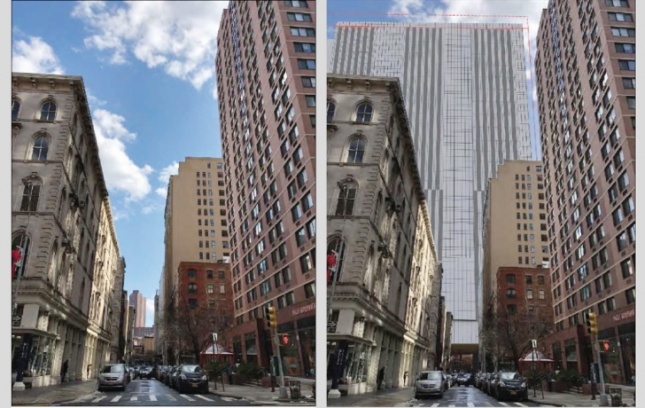On September 3rd, to the dismay of many community members and prison reform activists, New York City’s Planning Commission (CPC) approved Mayor de Blasio’s “Smaller, Safer, Fairer” plan to shut down Rikers Island‘s jail facilities and replace them with four smaller borough-based centers by 2026. With CPC’s 9-to-3 approval, the plan now moves forward to City Council before heading to the Mayor for approval as the last step in the city’s Uniform Land Use Review Procedure (ULURP). The council was given 50 days to consider the details before making the make-or-break vote scheduled for October 17.
The Mayor’s plan would introduce a 1,150-bed jail tower to a site in close proximity to each borough’s courthouse—down from what was originally proposed—as a way of improving transportation to court dates as well as bringing inmates closer to their families and communities. (Bronx residents are already suing the city for not living up to this promise with the jail proposed in Mott Haven.)

Bronx Community Board 1 wasn’t the only board to unanimously vote against new jails. Each community board in an area sited for a new jail tower voted down the plan for a number of reasons, which have been echoed by local residents and prison reform activists—including Representative Alexandria Ocasio-Cortez who recently endorsed the most prominent advocacy group, No New Jails. For Ocasio-Cortez, the Rikers Island complex should absolutely be closed but no jails should be built in its place. She hopes that at the “bare minimum” the vote is delayed until further information on what will be done with Rikers Island after its decommissioning has been gathered.
She also points to the lack of clarity in what the plan will actually do. This lack of concrete vision was also a concern for Orlando Marín, one of the three CPC commissioners who voted against the project. “At this point, we are being asked to vote on an application but have few details,” Marín said during the September meeting, according to Curbed. “The programming thoughts are clearly not finalized by the Mayor’s Office of Criminal Justice and contradictions that exist in the thinking and planning of physical structures.”

“For me one of the red flags is the fact that the largest infrastructure investments that we’re going to make as a city ($11 billion) won’t be towards homelessness, fixing our subways, or repairing NYCHA…it’s going towards incarcerating people,” Ocasio-Cortez explained to a reporter on C-SPAN. America currently incarcerates more people than any place in the world, and Ocasio-Cortez added, “We need to de-carcerate our country.” While de Blasio’s plan claims that it will shrink the city’s jail population from 7,400 to 4,000 by 2026 through a combination of sentencing and bail reform, jail abolitionists are questioning whether building new towers is the right way to accomplish this.
The question remains: How does architecture enforce systemic injustice, and how can architects develop ethical guidelines to address the right way to navigate the country’s jail crisis? One group of New York City architects, engineers, and designers have organized to develop an alternative to the borough-based towers in favor of a college-campus-like plan (seen above) that they believe would create more humane conditions for inmates, save money for taxpayers, and not impose new development on any neighborhoods.
The 45-page plan was delivered to City Council last Friday. It includes razing the existing Rikers Island Facilities and creating a new campus that includes a hospital, mental health facilities, open farming space, and work-training centers. To cut back on the travel time issue, a ferry system would be implemented. A last-minute attempt to be sure, and according to the New York Post, one de Blasio spokeswoman, Avery Cohen, declined to address questions about the plan.
Cohen wrote in a statement: “We consider this a historic opportunity to build on the city’s decarceration efforts that have fundamentally reshaped our criminal justice system, and will continue working with the Council as we move forward to finalize our plan.”











